What Will Your Concrete Actually Look Like After Applying Penetrating Sealer?
July 25th, 2023 | 4 min. read
By Sarah Etler
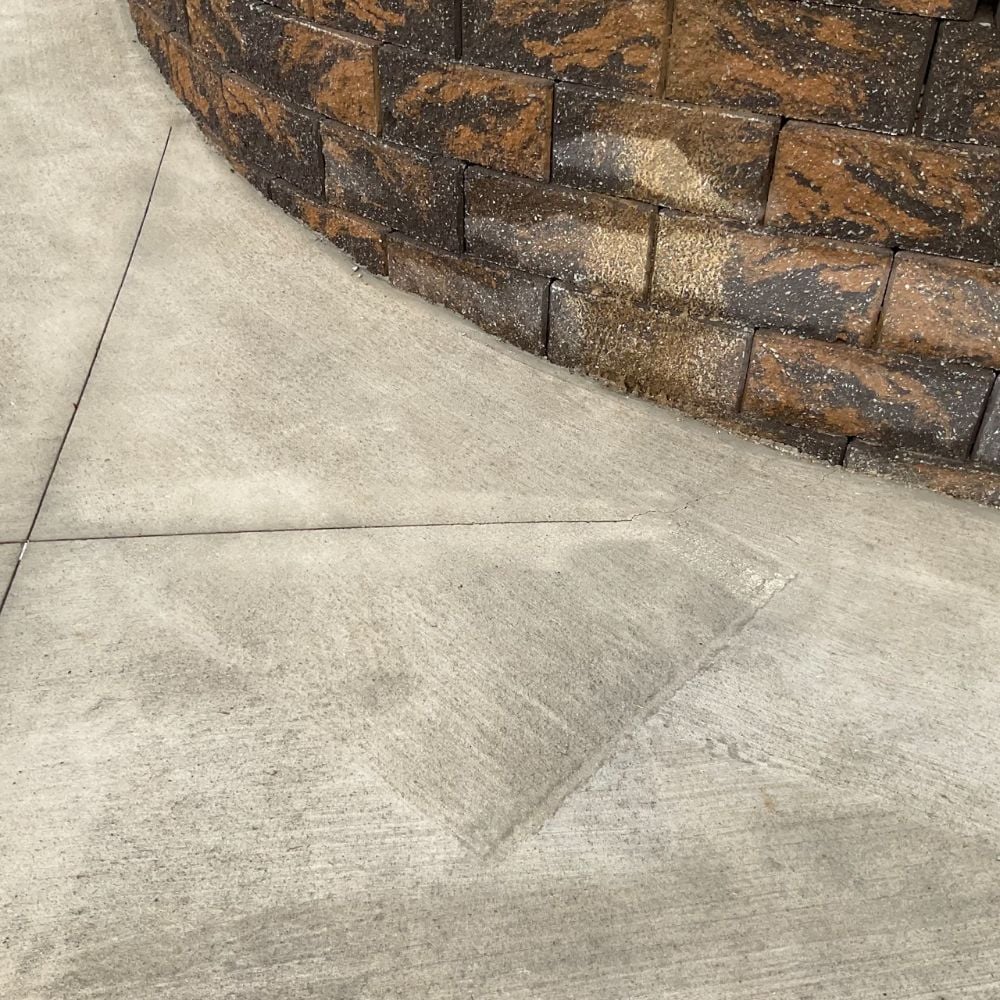
Learn about the different factors that can influence the way your concrete looks after cleaning and sealing with a penetrating sealer.
If your concrete is beginning to look dull or dingy, or you’re looking for a way to keep it protected against the harsh outdoor elements, cleaning and sealing it is a great option for you.
Blemishes like oil stains, built-up grime, and mold can be removed by pressure washing your concrete, and damage from freeze-thaw cycles, salt, staining, and more can be prevented when using the right protective sealer.
Here at A-1 Concrete Leveling Louisville, we use a high-quality penetrating concrete sealer due to the many benefits it has over topical sealers.
While cleaning and sealing your concrete with a penetrating sealer is a great way to enhance the look and durability of your concrete, it’s important to point out that what it looks like on one concrete surface may not look the same on others.
Due to the many variations found in every slab of concrete, it’s possible that your concrete may not look perfect after cleaning and sealing. For this reason, we want to be upfront with you about what to expect.
In this article, we’ll first review the basics of penetrating concrete sealer, then walk you through the factors that can affect the final look of concrete that has been cleaned and sealed.
Penetrating Sealer 101
When penetrating concrete sealer is applied to the surface of concrete, it absorbs into its pores and undergoes a chemical reaction within the slab that creates a hydrophobic barrier against water, deicing chemicals, dirt, and other damage-causing agents.
Penetrating sealers work to protect the concrete without changing the concrete’s surface appearance, texture, or tread. What your concrete looked like before sealing will be how it looks after sealing with a penetrating concrete sealer.
Factors That Affect the Appearance of Cleaned and Sealed Concrete
Because all concrete varies in some way, there’s no way to say exactly what your concrete will look like after being cleaned and sealed. However, this section explores some of the most common factors that can affect the end result.
Oil Stains
We clean concrete with a 4,000 PSI pressure washer which removes as much built-up dirt, grime, and stains as possible, but sometimes oil stains penetrate very deep into the concrete, and pressure washing won’t pull them out.
Applying a degreaser and scrubbing can help, but we never promise that we'll be able to completely remove dark oil spots. If you have extremely deep, dark oil stains, you may need to replace the concrete to get rid of them completely.
Once we seal the concrete, we are sealing the residual oil stain in. Sealer will help prevent future oil staining, but it will not take out previously made stains.
Troweling
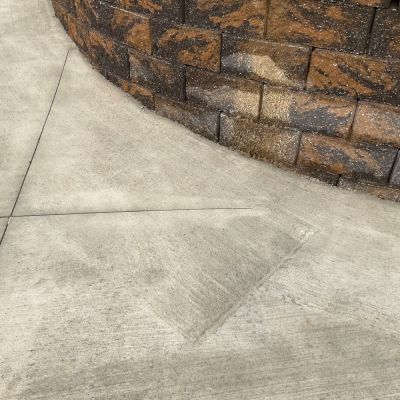
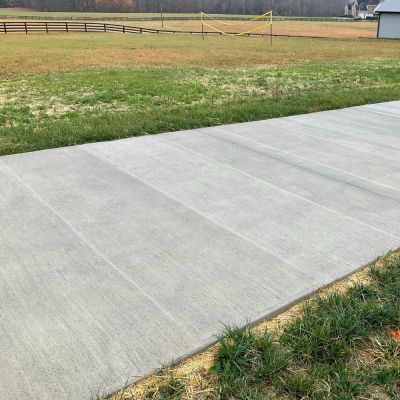
Depending on the intended use of the concrete, it will be finished or troweled accordingly.
For example, when installing concrete on places that receive rain, snow, and ice (think sidewalks or driveways) concrete is troweled in a way that adds texture and grip. Porches and garages, on the other hand, are finished smoother so you can easily sweep them or walk barefoot comfortably.
It's important to note that concrete trowel marks that were put in the wet concrete and dried there are not going to go away when pressure washed and sealed with a penetrating sealer. Because they're part of the concrete, they’ll be there even after the concrete has been cleaned and sealed.
Clay or Dust Discoloration
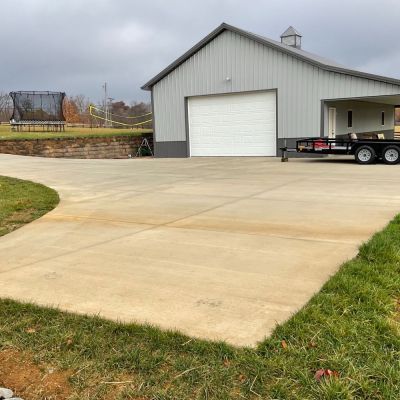
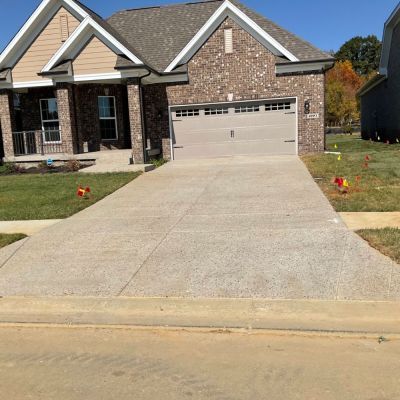
When concrete is drying or curing, dust or debris can blow onto the surface, bonding with and staining the original concrete. This means that you’ll never be able to get rid of this new color or stain.
In the photos above, you can see clearly where dry clay-soil dust blew over the concrete as it was curing and became one with the concrete, permanently tinting it a rusty orange color.
Because the stains cured or dried with the original concrete, cleaning the concrete will not remove this discoloration, only lift the surface dirt and staining that occurred after the concrete cured fully.
New Concrete
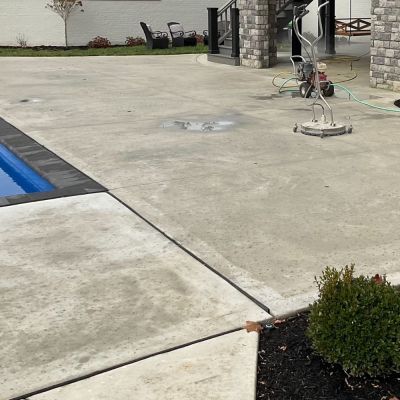
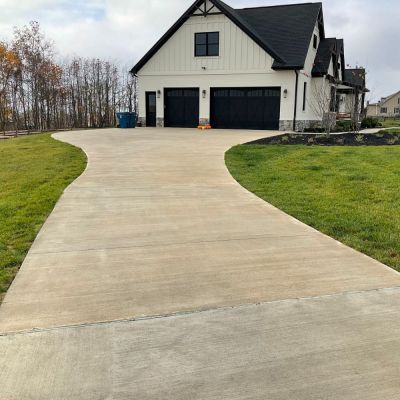
Even new concrete isn’t perfect. Your new concrete may be left with trowel marks depending on how it was finished and dark discolorations depending on how it cured.
If the concrete originally dried or cured with these dark discolorations or grooves from the finishing process, we won’t be able to remove them when cleaning the concrete. We can get the top dirt or grime off, but it will only get to the original concrete, which could be discolored or left with trowel marks.
It’s also important to note that we have to use lighter pressure washing on new concrete because it’s not fully hardened yet, and high pressure can damage it.
Spalling or Surface Damage
Surface Spalling
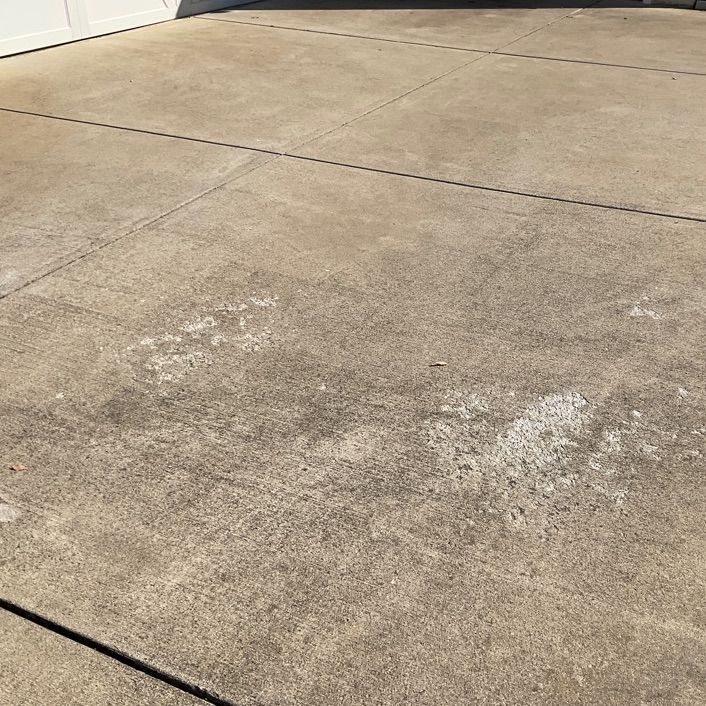
The spalling is very noticeable due to the high contrast between the dirty concrete and surface damage.
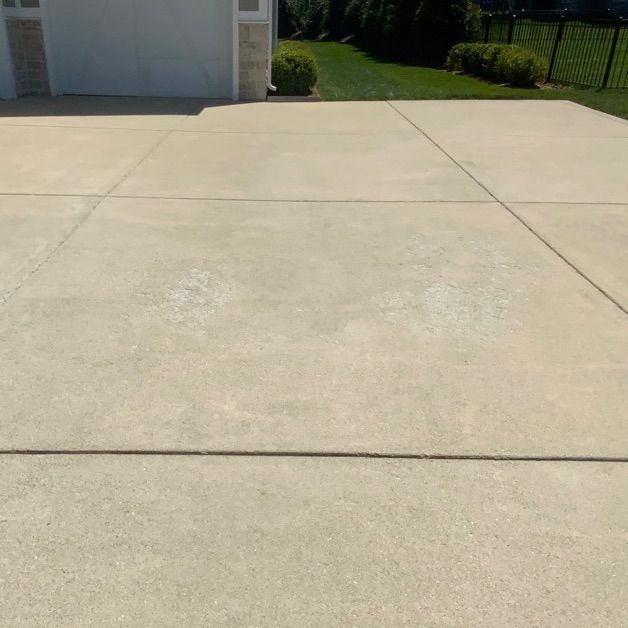
The spalling blends into the lighter, cleaner concrete, but it did not go away.
Chips, spalling, cracks, and other indentations in the concrete’s surface will not go away after it's been cleaned and sealed.
With this being said, because the surface and surface damage are both being cleaned, it will help create a more uniform appearance and make the damage stand out less.
It’s also important to point out that while cleaning and sealing the surface won’t fix the damage, it can help slow down its progression.
Topical Sealer on the Concrete
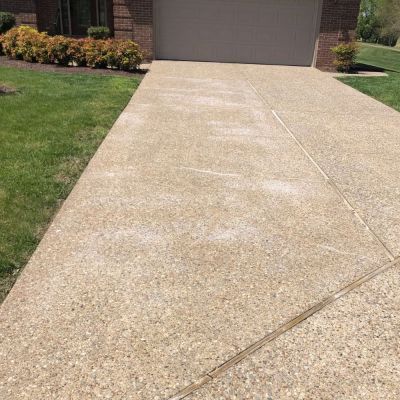
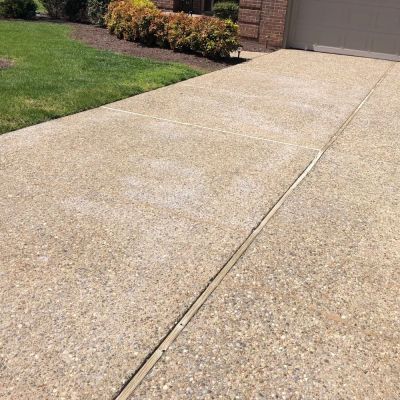
If you’ve sealed your concrete in the past with a brown-tinted topical sealer, you have to wait until it has faded or is removed completely by pressure washing to apply a penetrating sealer on top.
In places where the brown-tinted topical sealer doesn’t fade as quickly, like back patios or under covered porches, there still may be some residual sealer that doesn’t go away 100% after pressure washing.
Before applying a penetrating sealer over areas where there still may be residual topical sealer on the surface, we test to make sure the new sealer will absorb into the concrete properly.
If not, we typically go lighter on the penetrating sealer in those areas to try to avoid a white or light purple cast that is caused by the chemical reaction between the two sealers in those areas, as seen in the photos above.
If the white or purple hue does develop, we can pressure wash it off to reduce it, but it may never go away completely.
Pro Tip: In rare cases, the residual chemicals from where car cleaning products were used on the driveway can react with the penetrating sealer and leave the concrete with a whitish hue.
Now What?
Because there are lots of variables at play and every concrete cleaning and sealing job is unique, it’s important to know that the things mentioned above are possibilities.
Here at A-1, we believe in being transparent about not only our process but also about everything you need to make an educated and unbiased decision for your individual concrete repair and maintenance needs.
If you haven't already, you can request a free onsite estimate with an A-1 expert with the link below:
Be sure to discuss any concerns you may have with your estimator prior to going ahead with cleaning and sealing services, especially if you feel like anything mentioned in this article applies to your situation.
If you’re interested in learning more about concrete cleaning and sealing, check out these related topics from our online resource library, Concrete Academy:
Sarah Etler joined A-1 Concrete Leveling after receiving her Bachelor of Arts degree in English from Northern Kentucky University. As A-1's Content Marketing Manager, she works closely with industry experts to produce content that will best answer questions related to concrete repair and maintenance practices. Sarah loves living a life full of discovery and is excited every day to see what new things she can learn and share with those around her.